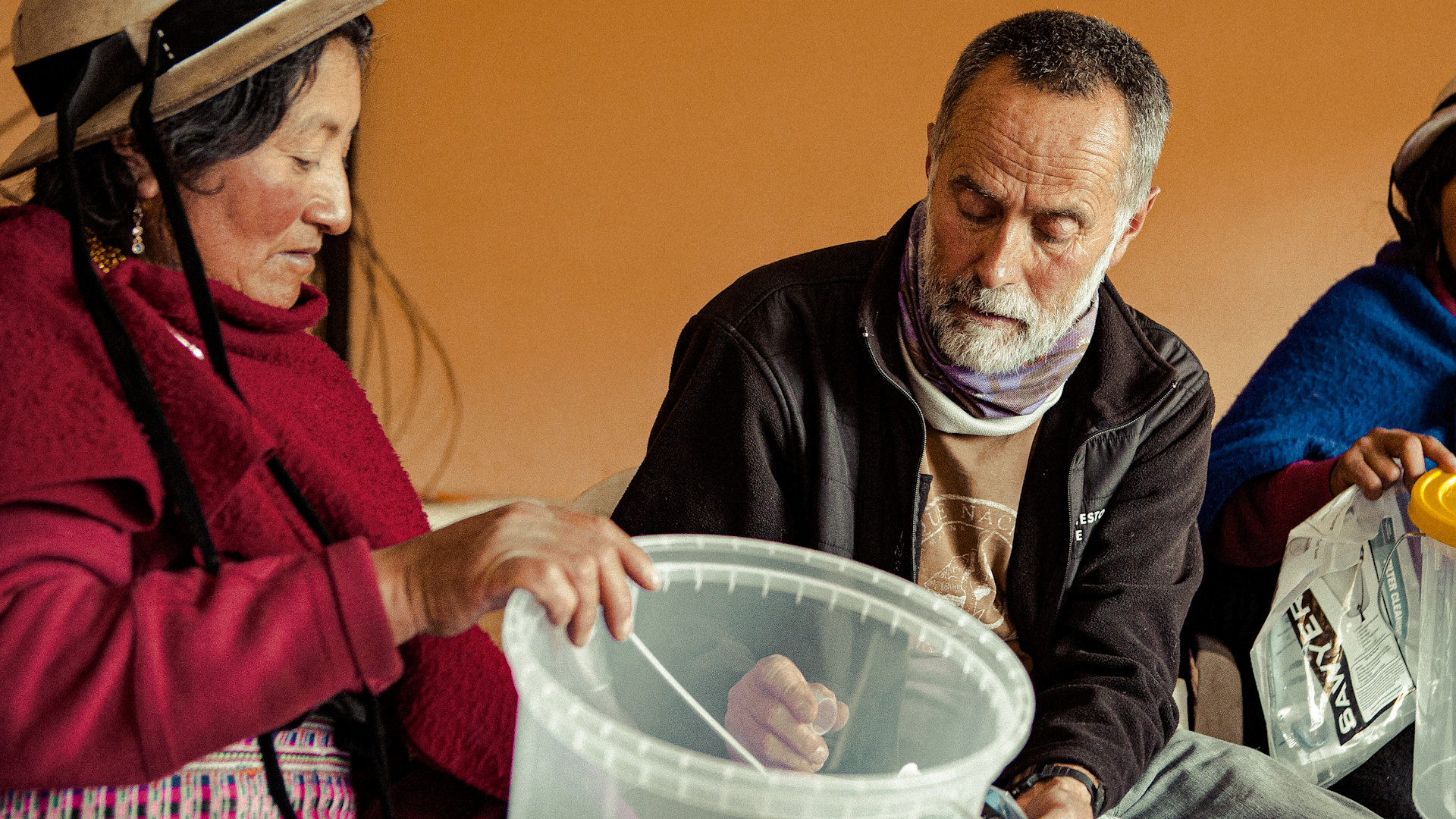Our Solutions

Filtration Systems
Portable, easy to use, easy to pack, and effective. One filter can provide 100 people with clean water for up to 5 years.
Learn MoreRainwater Harvesting
Rainwater, collected from the roofs of homes and buildings, then stored in adjacent cisterns or large UV protected plastic tanks.
Our Process
Immediate change, long-term impact
Since the beginning, whether it’s in the field or in the boardroom, we have asked ourselves, “How can we become more efficient? More sustainable? More impactful?”. Now, when we look back on our time as an organization we see how we’ve been able to answer some of those questions.
From the get go, it became very clear that we wanted our efforts to create an immediate impact. Most of the places we work have an urgency around water inequality that can’t afford to wait for “big aid” bureaucracy to run its course.
This is where we come in.
Water inequality has never been a question of technology, it’s a question of access to the technology. So we decided to fill that gap by becoming the much needed bridge to a long-term solution–with a central focus around immediacy.
Our program consists of two major solutions: rainwater harvesting systems, and portable water filtration systems. Both of which can last for decades but are ultimately considered to be “bridge” solutions to a more permanent infrastructural solution. We are 100% in support of working towards the development of permanent infrastructure, but what we refuse to do is let more senseless sickness and death happen in the process. The road to real change is long, but there doesn’t have to be such catastrophic fallout along the way. We remain steadfast in our belief that no one should suffer from contaminated water and tireless in our approach towards preventing it.
The Ripple Effect
Access to clean water is a game-changer. The overall health benefits are obvious, but the ripple effect that happens when clean water is introduced into a community is profound and often overlooked. Sure, the risk of waterborne illnesses such as Cholera, Salmonella, Giardia, E. Coli, and Typhoid, is mitigated, but it also positively affects many other aspects of life.
Less money spent on medicine and clinic visits, less time staying home being sick, less time collecting water or the wood to boil it, means a significant change to the socioeconomics of a community. Less sick days for children means a higher attendance in school, changing the outcome of their overall education. The list goes on: infant care, feminine hygiene, women’s empowerment. All of these reasons are a driving force for us, but it is the fundamental belief that everyone deserves access to clean water, as a basic human right, that drives us every day.
Disaster Relief
Because we understand that the first few weeks following natural disasters are crucial in curbing the spread of waterborne diseases and life threatening dehydration, we typically launch our response in three phases:
• Phase one is designed to mitigate the immediate suffering of the most impacted families, by implementing portable water filtration systems in communities (both to shelters and residences still left standing) living at, or below, the poverty line. In many cases these are communities that already needed our program prior to any disaster, making them the least equipped to handle any catastrophe. We have seen this scenario many times, in a range of countries. It is the “forgotten” underserved communities that feel the worst of what these events have to offer.
• Phase two, after the immediate need for clean water has been addressed, we focus on the breakdowns in water infrastructure through the creation of large and centrally-located community water stations, or “depots”. These are big systems that can serve entire communities, rather than just one household.
• Phase three analyzes data that has been compiled throughout the first two phases, allowing us to design and implement long-term mechanisms to change the way water is accessed for years to come – such as rainwater harvesting systems, borehole wells, and/or desalinization systems.
Monitoring & Evaluation
Waves For Water does not participate in one-time distributions. We are focused on long-term, sustainable programs with measurable impact. To ensure this, monitoring and evaluation is one of the most important aspects of what we do.
We have developed a robust monitoring and evaluation program centered on collecting information on customized digital surveys. At baseline, we determine the water situation for the community to determine the best possible solution. Following implementation, our M+E team returns at multiple time points to meet with our community champions and conduct household surveys. We go house to house and visit the families that were recipients of our program - reinforcing, reteaching, troubleshooting, and collecting data. The data we collect focuses on utilization of our program’s solutions as well as the downstream impacts including health, finances, school and work attendance. All of the information we get from this process, whether on the level of country, state, community, or individual, goes back into reinforcing or improving our approach.
The monitoring and evaluation process is not only about collecting data on how well our program is working. More importantly, it allows for one-on-one teaching opportunities that are crucial for reaching the potential impact of each and every clean water solution we implement.